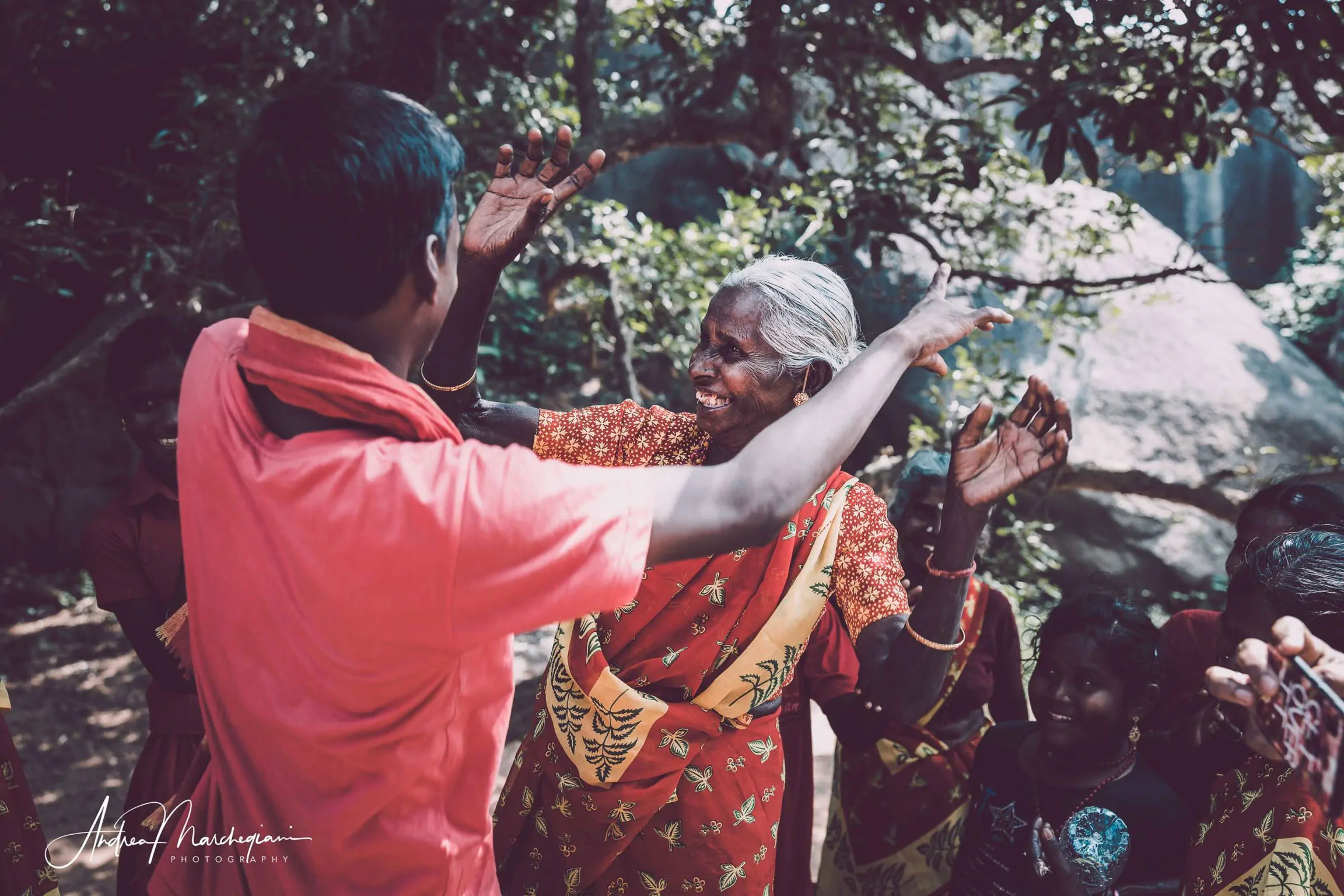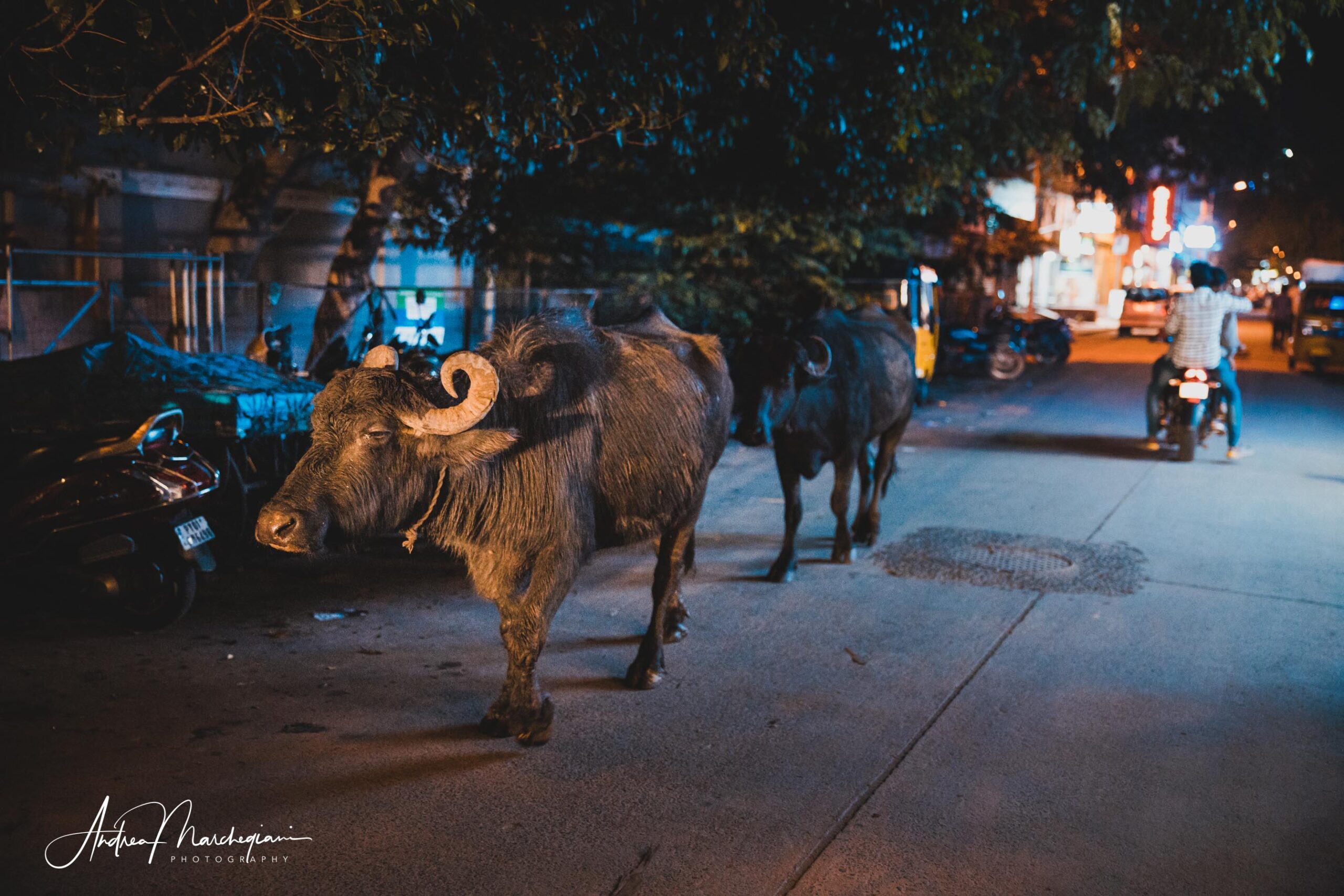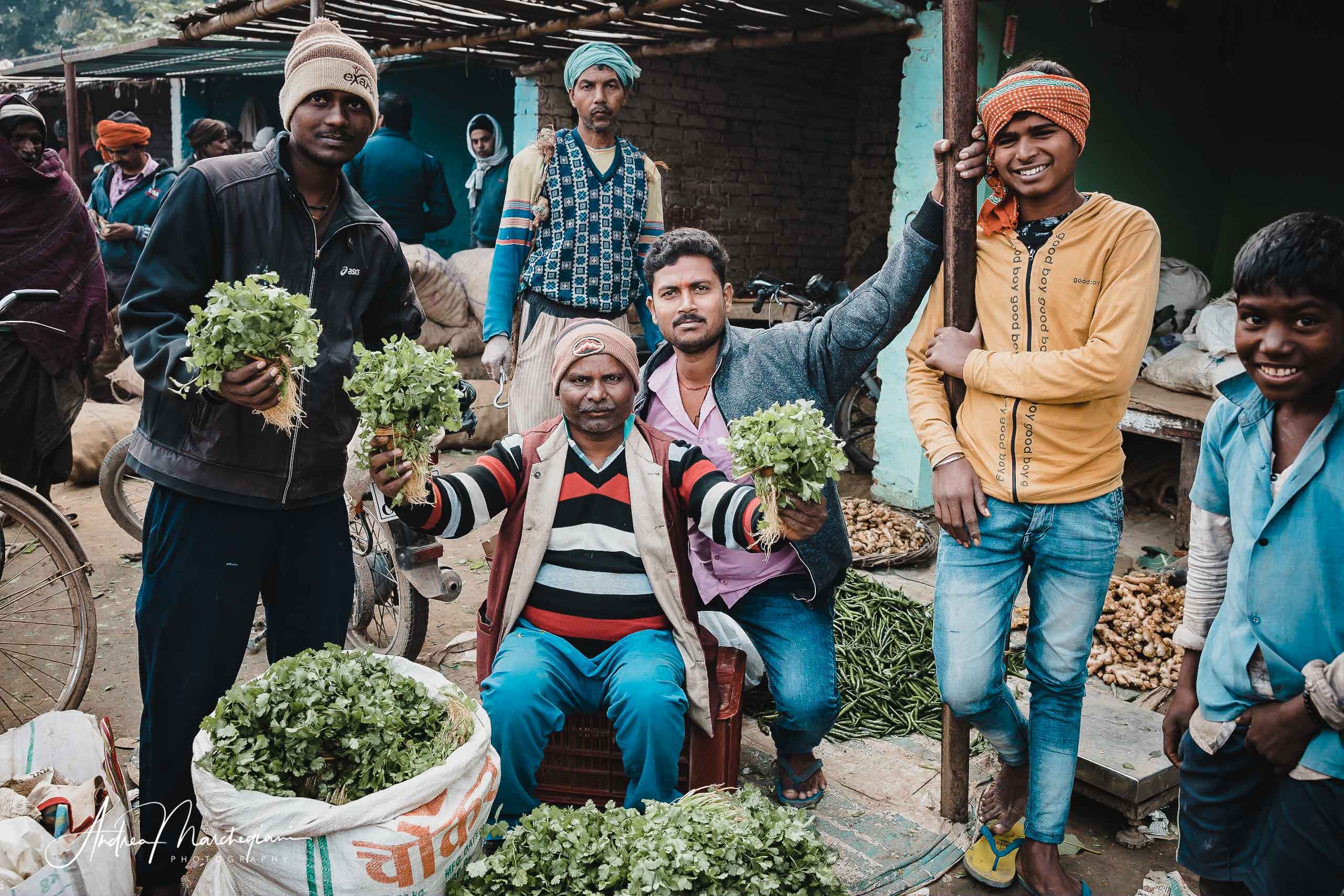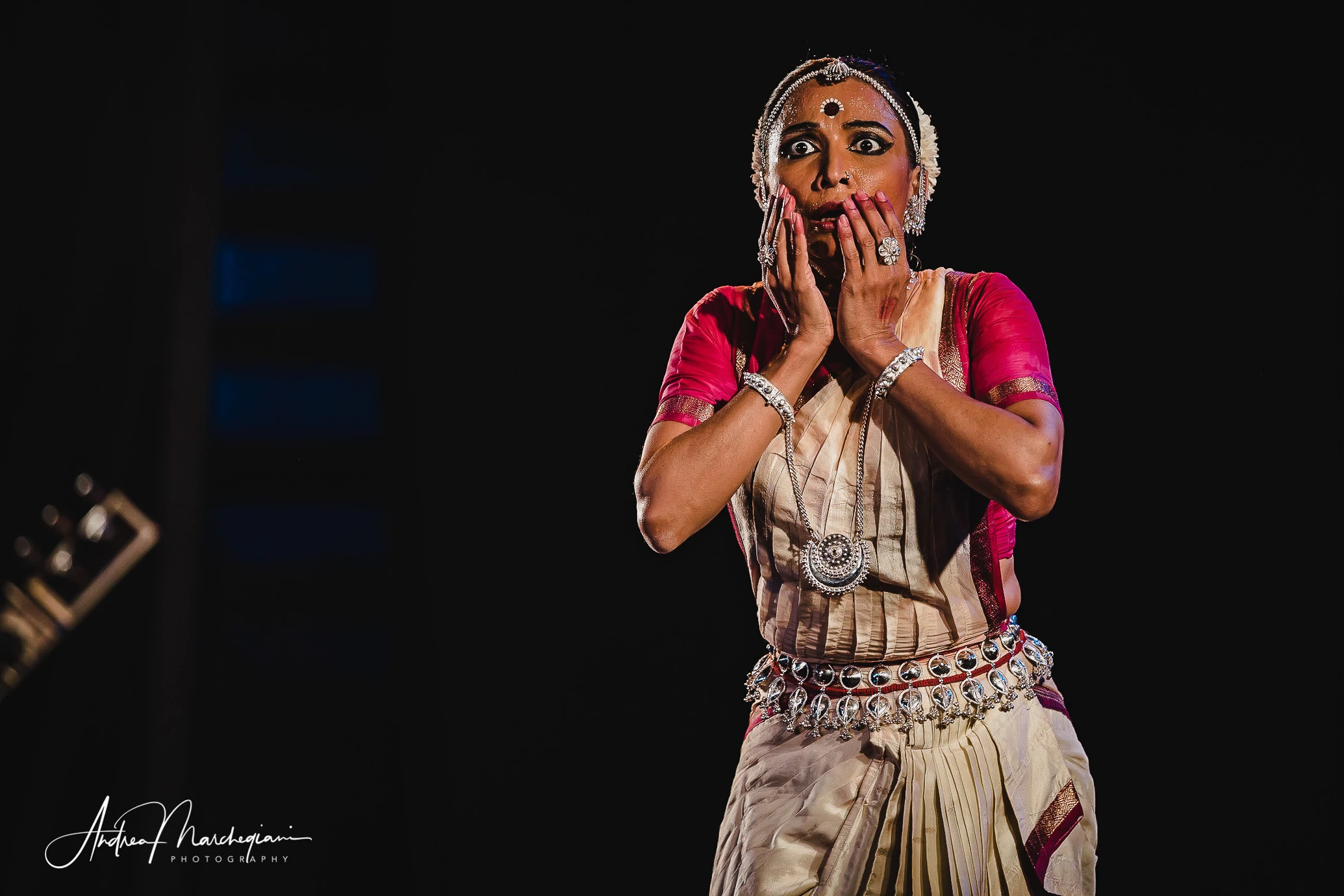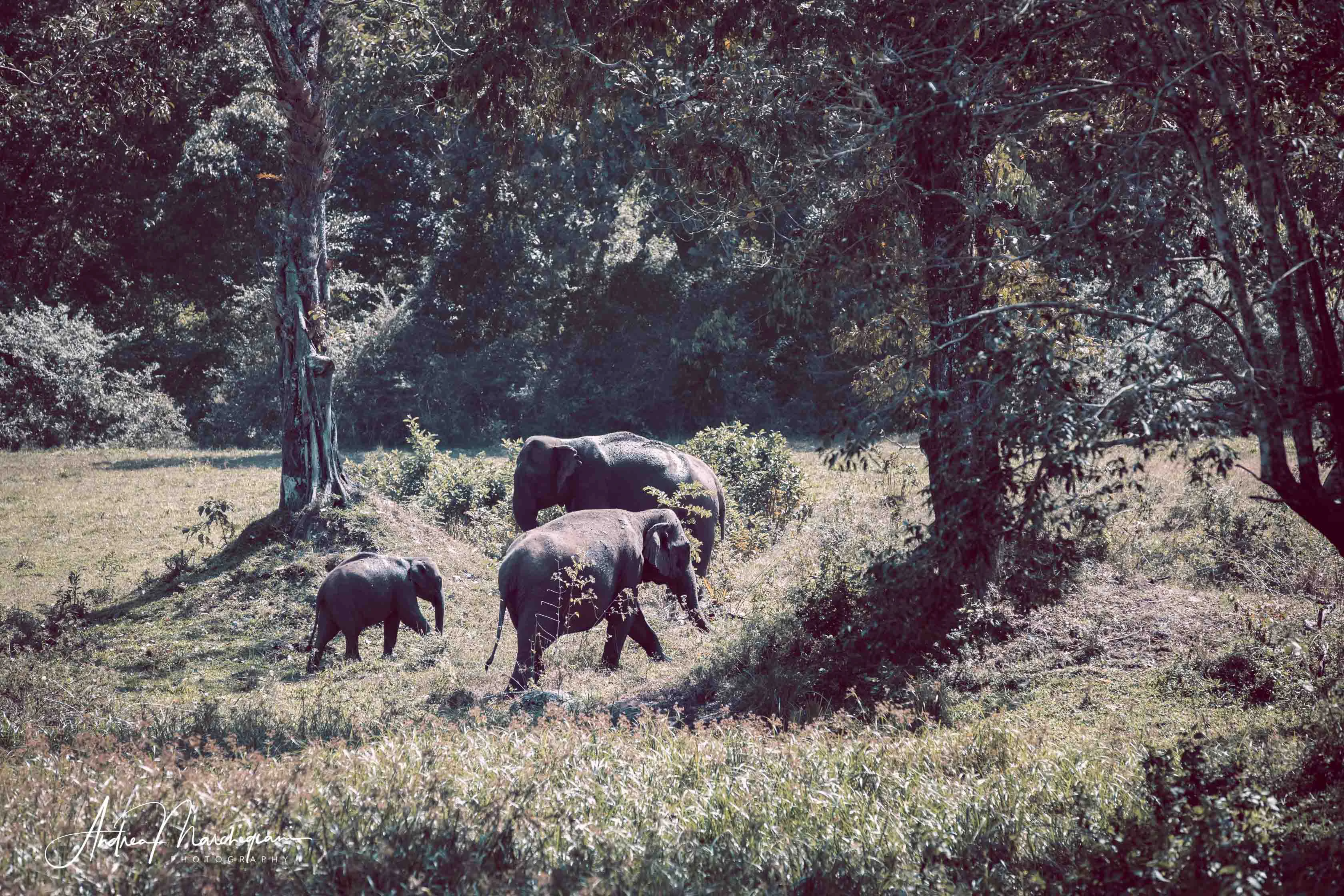
- Home
- Photo Galleries
- Portrait Photography
- Landscape Photography
- Street Photography
- China
- Ethiopia
- India
- Holy Ganges
- Varanasi
- Varanasi Ganga Aarti
- Varanasi, Manikarnika Ghat
- Varanasi Streets & Alleys
- Varanasi Demolition
- Varanasi Fruit Market
- Sarnath
- Brick Kilns
- Tamil Nadu, Chennai & Mamallapuram
- Tamil Nadu, Fort Tirumayam & Madurai
- Tamil Nadu, Tiruvannamalai & Thanjavur
- Kerala, Munnar
- Kerala, Peryiar
- Kerala, Backwaters
- Kerala, Kochi
- Kazakhstan
- Myanmar
- Senegal
- Uzbekistan
- Travel Blog
- China
- Ethiopia
- India
- Tamil Nadu & Kerala
- Varanasi
- Whato to do in Varanasi
- Varanasi Life along the Ghats
- Varanasi Death along the Ghats
- Varanasi Ganga Aarti Ceremony
- Varanasi demolished to honor Shiva
- Varanasi Fruit Market
- “Varanasi, A Journey into the Infinite”
- Sarnath
- All about River Ganges
- Holy Shit. All about Indian Cow Dung
- Clean India Project
- Brick factories
- Tilaka, pundra, bindi: what is the mark on Indian foreheads?
- Kazakhstan
- Mongolia
- Ulaanbaatar, the coldest capital in the world
- What to do in Ulaanbaatar
- Chinggis Khan Museum, 6 floors of Mongolian history
- Gorkhi-Terelj National Park and Bodgkhan Natural Reserve
- Altai Mountains, Things to do in Olgii and Sagsai
- Living with the Eagle Hunters
- Sagsai Eagle Festival
- Navrus Festival
- Xöömej, Mongolian throat singing
- Mongolian Food
- Myanmar
- Senegal
- Uzbekistan
- Latest Posts
- Photography Blog
- About
- Prints
All of India is brutally sincere. Love, hate, life and death. It’s part of its charm. India can unite opposites, so you should not be surprised if giant statues of male genitalia are worshipped in temples.
It happens in Tiruvannamalai, a city born on a sacred mountain, Arunachala, where Shiva is said to have manifested himself as a big fiery phallus.
Share with your friends:
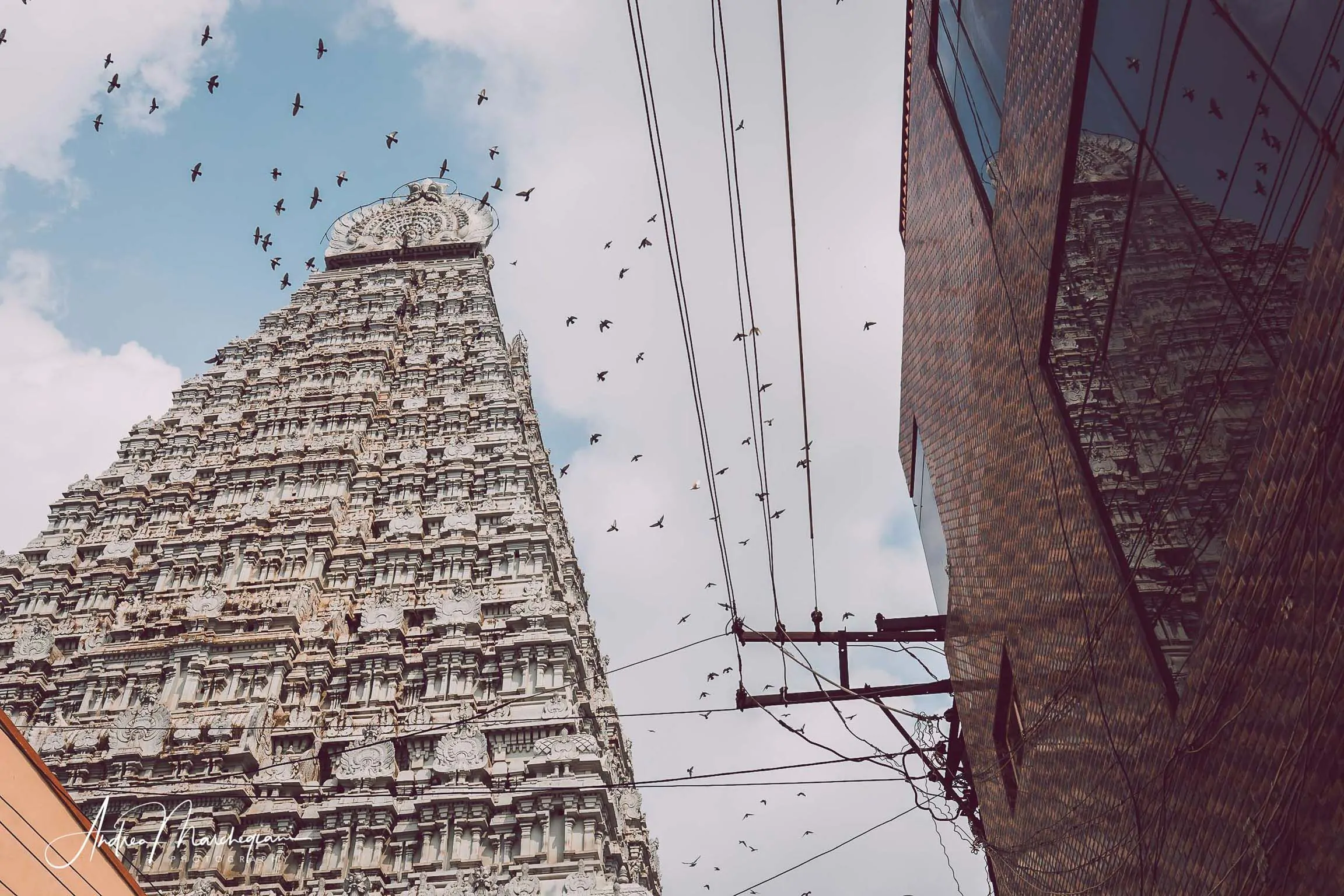
The religious fervour of Tamil Nadu
Tamil Nadu is a sunny region in southern India, known for the religious fervour of its joyful inhabitants and the presence of some of the most spectacular Hindu temples in the country. Despite being only as large as one third of Italy, Tamil Nadu hosts more than 5,000 Hindu temples. Pilgrims keep coming in the area to celebrate the busy religious calendar.
If you ask an Indian how many Hindu gods there are, he will look at you with a big smile and say, “33 millions!”
Considering the fact that each deity may manifest as hundreds of different avatars, it is easy to understand this profane joke is not far from the real facts.
Since I arrived in Tamil Nadu I keep hearing about Shiva, Visnu, Brama, Kali and Parvati, Krishna and Ganesh… At every altar I visit, I discover new stories, anecdotes and intricate degrees of kinship. Sometimes I get dizzy, I take a few notes not to forget everything but the new data seem to contradict the previous ones so I just want to call the whole thing off. Then I take a breath and I tell myself that sooner or later I’ll figure it out.
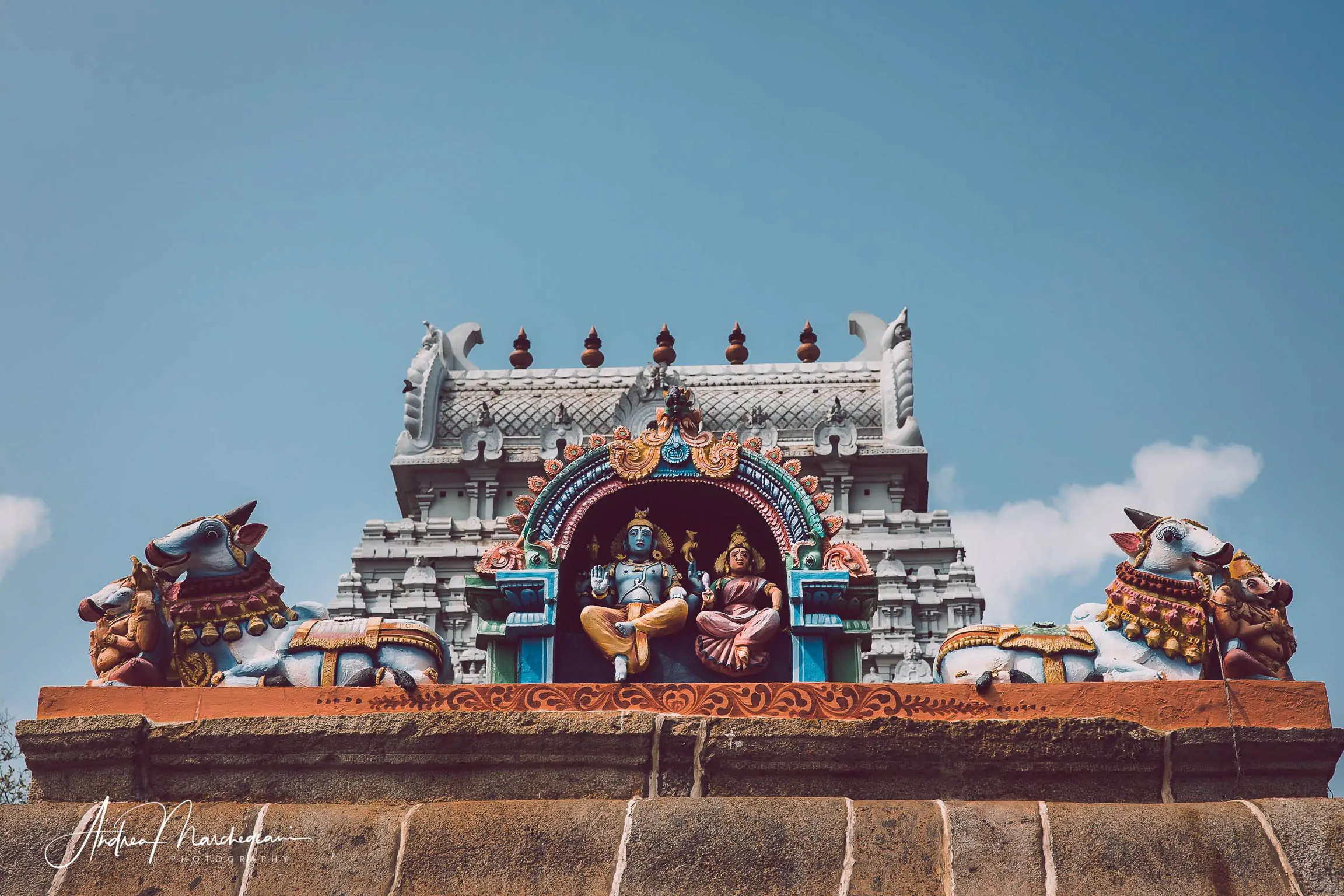
Shiva has 19 avatars
Above all gods, people in Tamil Nadu have a real obsession with Shiva. In fact, most of the temples in the region are dedicated to him.
This could at least make things easier for someone approaching the Hindu mythology, but not as much as you would like. Shiva can still manifest himself with 19 avatars, including a bull, a hybrid between a bird and a lion, a man with the face of a monkey and, not to miss anything, a large phallus in erection.
Temples in Tamil Nadu
In Tamil Nadu there are temples of Shiva everywhere. They are surrounded by perimeter walls with high entrance towers, called Gopuram, all carved with thousands of statues of gods and demons. Inside, several pavilions host various altars, surrounded by colonnades, and there is always a sacred water tank. In the inner area there is the central shrine, dedicated to the main deity of the temple. Here non-hindus often cannot enter.
But the temples are not all the same for the faithful: there are the temples that arose in the places where Shiva would have danced his cosmic dance , temples where the heavenly bodies dwell and those where Shiva is venerated as one of the 5 elements.
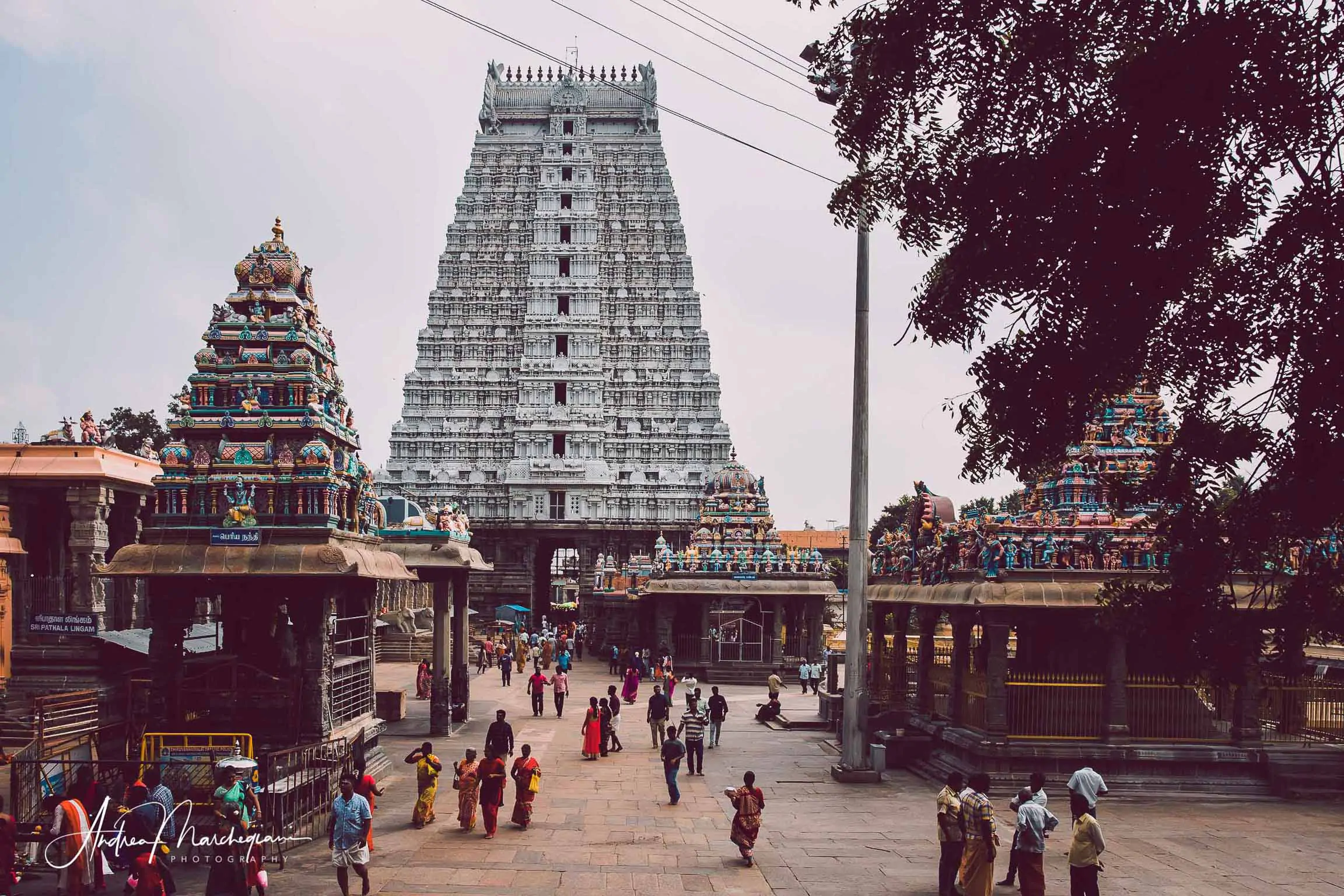
Tiruvannamalai and Shiva's fiery phallus
Tiruvannamalai is a sacred city on Mount Arunachala. Here Shiva is worshipped in his most brutal form, fire.
The temple of Tiruvannamalai, or Arunachalaleswarar Temple, occupies an area of 10 hectares and is one of the largest temples in India, with Gopuram up to 66 meters high.
I immediately notice that the Gopurams are not colored, as I had seen in some photos, but off-white, which makes them much less showy. Pandi, my guide, explains the temples are colored with bright colors but in time the weather discolor them. That is why the faithful are often asked to pay offers to repaint them.
Outside the temple, near the Gopuram of Thirumanjana, the streets are filled with flower stalls and votive offerings. All the faithful buy something to offer at the foot of some sacred statue. This rite is called Puja and it consists of a series of offerings, gestures and mantras to be recited at the feet of sacred statues in order to obtain a personal benefit (more wealth, more health, more love etc.)
There is also a cotton candy seller to delight children!
At the entrance we are asked to take off our shoes and not to take pictures of the altars. I walk inside the temple and wander among the colonnades and altars scattered in the inner area.
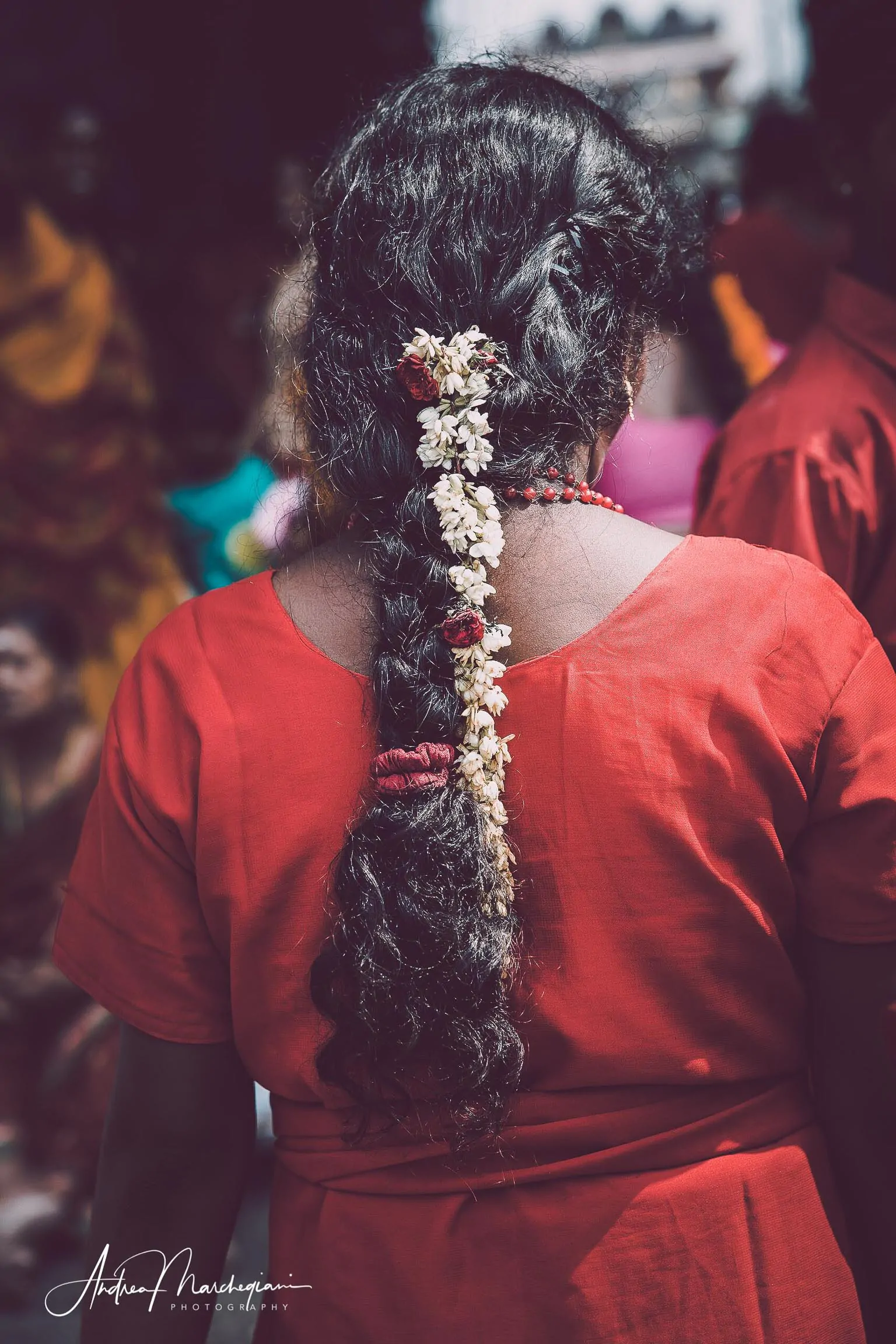
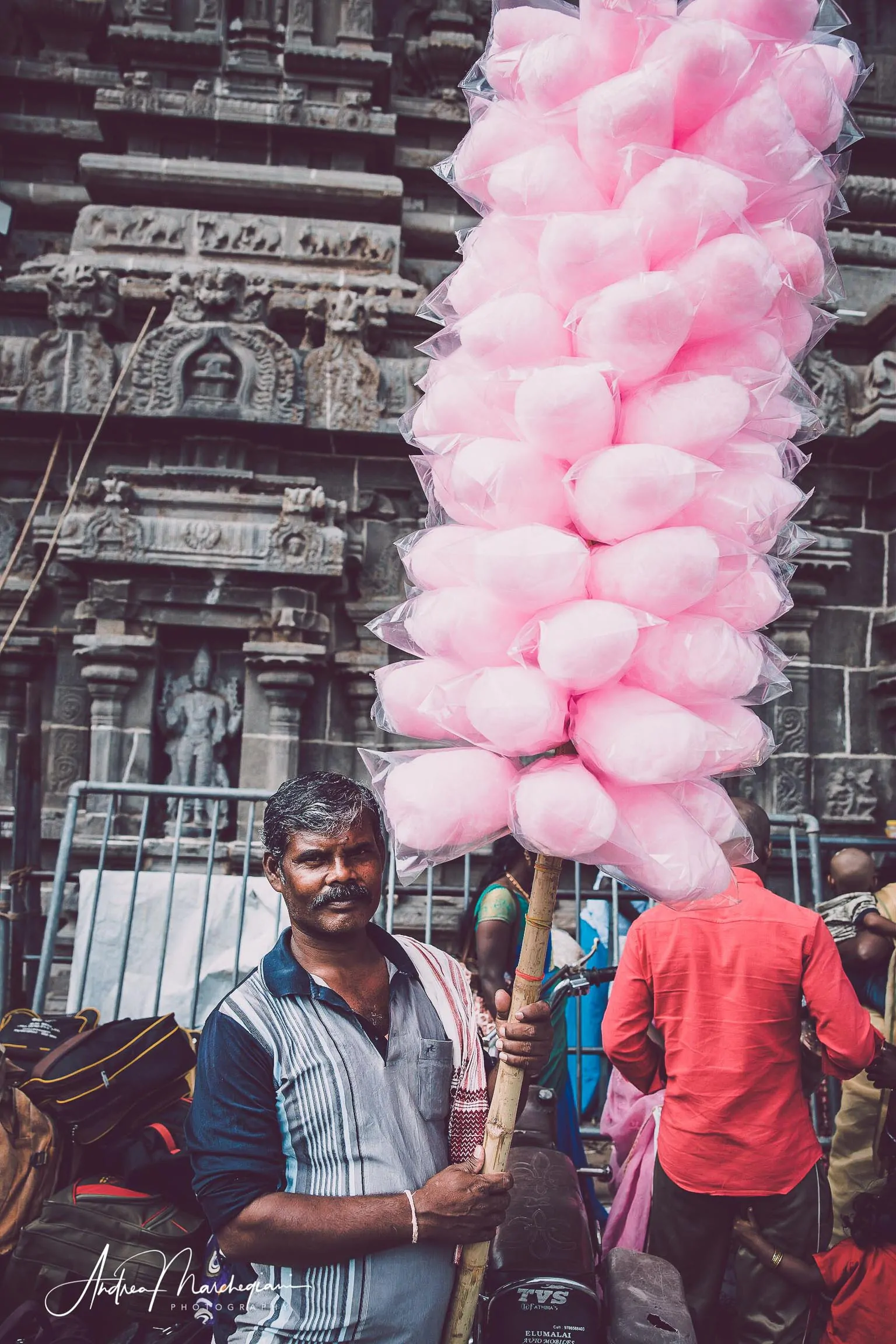
Several priests approach and ask me to draw the tilak on my forehead. “Good luck!” they say insistently. “I am not a Hindu!” I answer. I fear it is not right to receive the tilak if I do not understand it or believe its sacred meaning. But they insist, “All right, you’re not a Hindu. But you still need a bit of luck!” They’re irresistible. I accept it.
They draw my forehead between big laughs, then they get serious and ask me for an offer for the service received. Is that the reason for all the pressure?
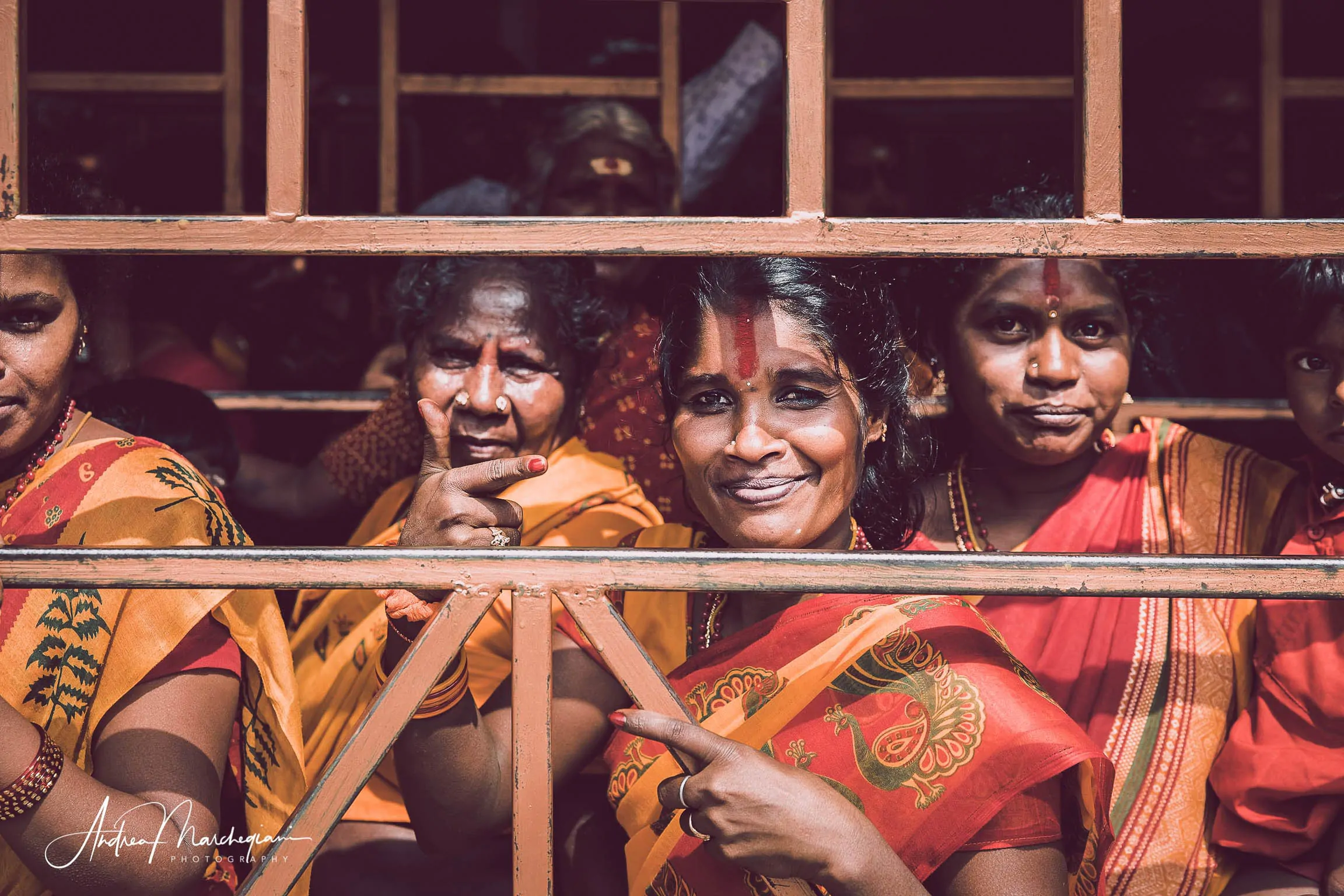
It is easy to identify where the central shrine is located: there is a very long line to access it. Women with colorful saris, their hair gathered and braided with flowers, greet me and smile when I approach. I photograph them and laugh. Here everyone laughs. As soon as the eyes meet, the eyes sparkle and the mouth reveals very white teeth. Indians are beautiful: in their faces there is all the life of the world.
I also queue patiently. The interior of the shrine is dark and the air is saturated with the smell of incense.
At the center is the large lingam, a phallic-shaped statue representing an avatar of Shiva. Legend has it that right on Mount Arunachala, where Tiruvannamalai rises, Shiva appeared with the appearance of a big fire phallus to restore light to the world, after his wife Parvati had made him fall into darkness closing his eyes. If it seems this story makes no sense, well, there are many more anecdotes of quarrels and spite between the two spouses!
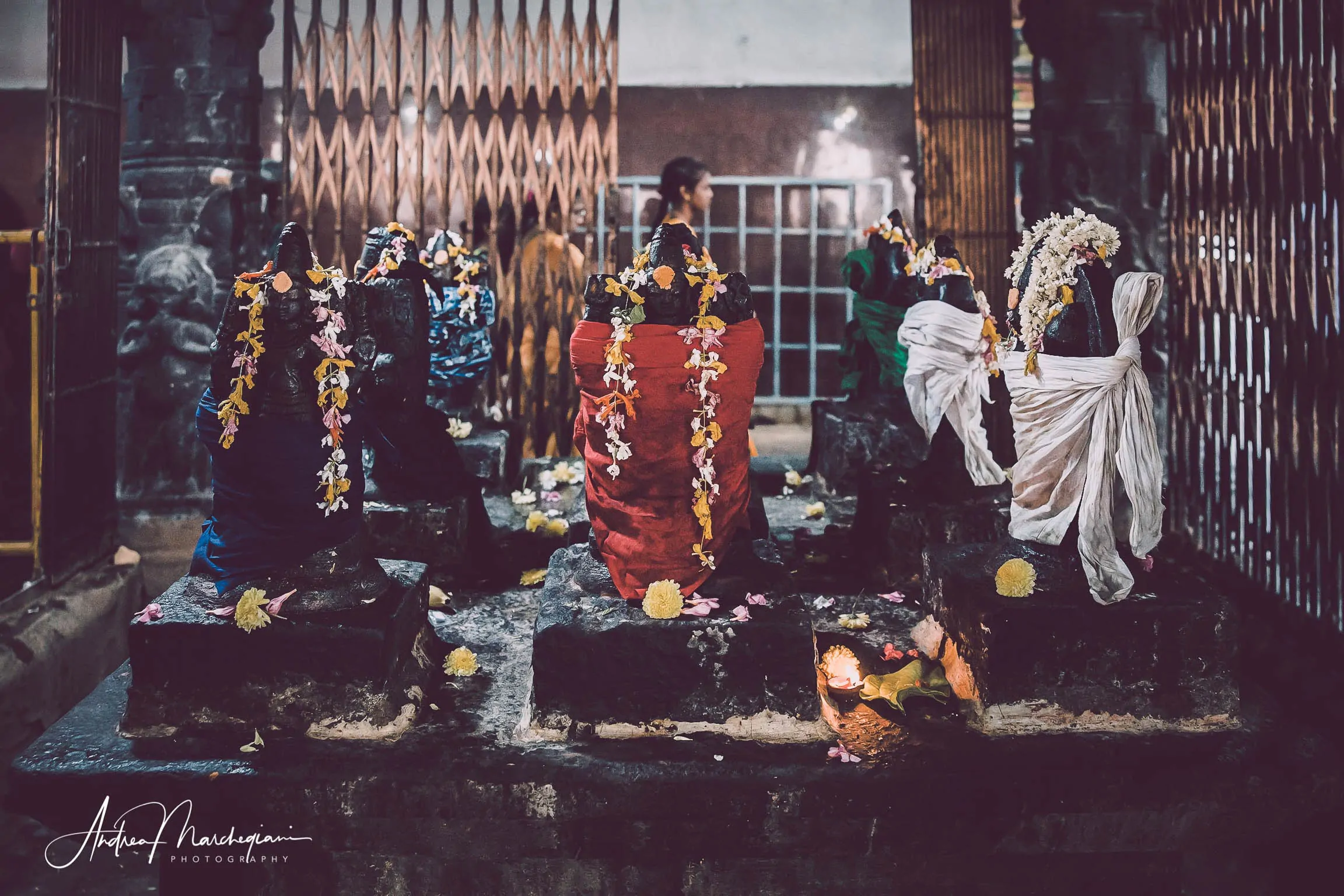
“All this queue for a phallus!” jokes my friend Barbara. We laugh, but we hold back not to disrespect. In fact, I find it liberating to know that Hinduism has temples that venerate God’s erect phallus, especially in relation to all Christian sexophobic rhetoric.
Sexuality is a fundamental part of life, everything that lives has a sexuality, but for centuries the Catholic Church has had a say in how people should express this fundamental part of temselves. That is why I feel like I am witnessing something revolutionary: in front of me women, men and children pass by the lingam and brush it with devotion.
Western people may find a lingam funny. Yet, for Hindus it symbolizes the creation and they are here to thank Shiva, creator and destroyer of worlds.



